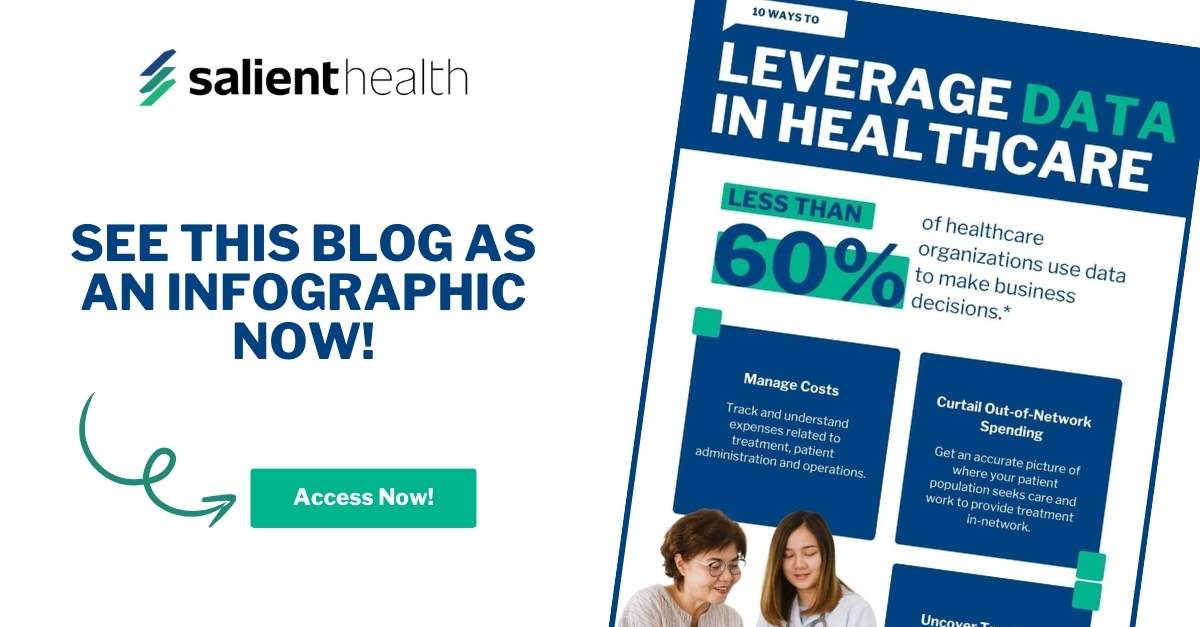Healthcare organizations must think differently about their data – their ability to harness the power of data analytics can make or break the success of their organization. From improving patient outcomes to streamlining operations, data holds the key to unlocking efficiencies and meaningful insights. But with data coming in from sources across the organization – patient data, clinical, operational, where do you begin?
Keep reading for 10 practical ways your healthcare organization can leverage data analytics to drive meaningful change. Whether you’re looking to enhance clinical decision-making, optimize resource allocation, or boost patient satisfaction, these strategies will reveal how healthcare organizations can transform raw data into actionable intelligence.
#1 – Manage Costs
When you leverage healthcare analytics, you can identify inefficiencies and areas of unnecessary spending. Analyze patient data to optimize resource allocation, streamline operations and reduce waste. Advanced data analytics capabilities like predictive modeling allows you to use the data you currently have to forecast future expenses and plan accordingly. Access to structured and understandable data allows you to realize patterns in key financial metrics to uncover hidden cost-saving opportunities and improve your organization’s financial health.
Effective cost management isn’t just about cutting expenses – it’s about maximizing value and efficiency across all aspects of your healthcare operations. And you need access to the data to do it.
#2 – Curtail Out-of-Network Spending
Out-of-network costs can be detrimental to healthcare organizations in the value-based care environment, particularly Accountable Care Organizations (ACOs). Through the analysis of claims data, patterns can be identified pertaining to out-of-network utilization to inform targeted interventions. Healthcare analytics can also be used to pinpoint high-cost providers and services outside your network, driving the efficacy of in-network patient care and retention strategies.
Consider creating a data-driven referral management system that automatically suggest in-network options to physicians. Predictive modeling allows healthcare organizations the ability to forecast potential out-of-network spending and proactively optimize network utilization. Additionally, healthcare organizations can use data analytics to negotiate more favorable contracts with frequently used out-of-network providers and ultimately curtail unnecessary expenses while maintaining care quality.
#3 – Uncover Treatment Efficiencies
Leveraging healthcare analytics can revolutionize your approach to patient care. The analysis of treatment outcome data can help to identify procedures that yield the best results for specific conditions. This insight allows for the optimization of a healthcare organization’s protocols, ensuring patients receive the most effective treatments.
Metrics such as recovery time, readmission rates and patient satisfaction scores are vital to uncover areas for improvement and standardize best practices. This data-driven approach not only enhances patient outcomes but streamlines resource allocation. It enables the potential to reduce costs without compromising care quality.
#4 – Understand Outcomes
Understanding outcomes is crucial to improve patient care and operational efficiency. By analyzing data effectively, you can gain insights into treatment effectiveness, patient satisfaction and overall health trends. This knowledge empowers you to make informed decisions and drives targeted intervention strategy.
Analyze Patient Results
Deep dive into your patient data to identify patterns and correlations. You can pinpoint opportunities to improve and develop evidence-based best practices by examining factors such as the efficacy of treatment protocols, recovery times and readmission rates.
Measure Long-Term Impact
Use healthcare data to track long-term patient outcomes, allowing you to assess the efficacy of various interventions over time. This approach enables you to refine treatment strategies and allocate long-term resources more effectively, ultimately enhancing the quality of care provided to your patients.
#5 – Measure Clinical Performance
Access to the right data allows you to objectively assess and improve clinical performance. By analyzing patient outcomes, treatment efficacy, and provider metrics, you can identify areas for enhancement and optimize care delivery.
Track Key Performance Indicators
Utilize healthcare analytics to monitor crucial KPIs such as ER Frequent Flyers, length of stay, medication adherence and patient satisfaction scores. This data-driven approach enables you to pinpoint strengths and weaknesses in clinical processes.
Benchmark for Best Practices
Compare your performance against industry standards and peer institutions. Use these insights to set realistic goals, implement targeted interventions, and drive best practices in patient care.
By harnessing the power of data, you can elevate clinical performance and ultimately deliver better health outcomes for your patients.
#6 – Encourage Continual Improvement
Healthcare organizations must foster a culture of continuous improvement using data as a guide. Leveraging healthcare data enables the identification of areas for enhancement and provides indicators of progress over time. Implement regular performance reviews using analytics-driven insights to pinpoint strengths and weaknesses in your processes.
Encourage staff to engage with data by providing user-friendly dashboards and training on data interpretation. This empowers them to make data-informed decisions in their daily work. Set measurable goals based on analytics and celebrate achievements to motivate ongoing improvement efforts.
#7 – Identify and Prepare for Healthcare Trends
Data empowers healthcare organizations with the intelligence needed to anticipate and prepare for emerging healthcare trends. Analyze historical data to identify patterns and predict future developments in patient care, treatment methods and healthcare delivery.
Leverage predictive modeling to understand and forecast disease prevalence, seasonal fluctuations in patient volumes and shifts in population health needs. This foresight allows you to allocate resources efficiently and adapt strategies proactively.
Access to healthcare analytics also allows for the monitoring of industry innovations, such as telemedicine adoption rates or the impact of new medical technologies. By staying informed of these trends, you can position your organization at the forefront of healthcare innovation, ensuring better patient outcomes and operational excellence.
#8 – Improve Patient Coordination
The integration and analysis of patient data across multiple sources, allows healthcare organization can create comprehensive views of each patient’s health journey. This holistic approach enables better communication between healthcare providers, reducing gaps in care and potential errors.
Healthcare analytics tools allow organizations to quickly and accurately identify high-risk patients who may require more intensive coordination. These insights allow you to proactively manage care transitions, ensuring smooth handoffs between different healthcare facilities or providers. Data-driven coordination also allows for the optimization of appointment scheduling, the reduction of wait times and improves overall patient satisfaction.
By harnessing the power of data, you can streamline care processes, enhance collaboration among healthcare teams, and ultimately deliver more personalized and effective patient care.
#9 – Optimize Patient Education
Leveraging healthcare analytics can significantly enhance patient education efforts. By analyzing data on patient demographics, health literacy levels, and preferred learning styles, you can tailor educational materials for maximum impact. Use insights from healthcare data to identify knowledge gaps and common misconceptions among your patient population. This enables the creation of targeted content to address specific needs.
Implement interactive digital platforms that track patient engagement with educational resources. These tools can provide valuable data on which materials are most effective, enabling continuous improvement of your patient education strategies. By harnessing the power of data in healthcare, you can ensure that patients receive the most relevant and impactful information to manage their health proactively.
#10 – Minimize Patient Churn
Retaining patients is crucial for the success and care of both the patient and the healthcare organization. Leveraging data analytics can help identify at-risk patients and inform targeted retention strategies. By analyzing patterns in patient behavior, appointment history, and satisfaction scores, predictions pertaining to individuals likely to seek care elsewhere can be made.
Healthcare analytics can be used to segment your patient population and tailor personalized outreach efforts. For example, send timely reminders to patients who frequently miss appointments, have not completed annual wellness visits or education pertaining to pertinent beneficial health screenings.
Retaining existing patients is often more cost-effective than acquiring new ones. By harnessing the power of data, you can minimize churn and foster long-term patient loyalty.
Conclusion
Healthcare data analytics offers tremendous potential to transform care delivery and health outcomes. By implementing these 10 strategies, your organization can harness the power of data to drive clinical improvement, operational efficiency, and improve financial performance. Build data literacy across your teams and foster a data-driven culture, continually seeking innovative ways to turn data into actionable intelligence. With persistence and vision, you can position your healthcare organization at the forefront of the data revolution, ultimately delivering better care and value to patients.





